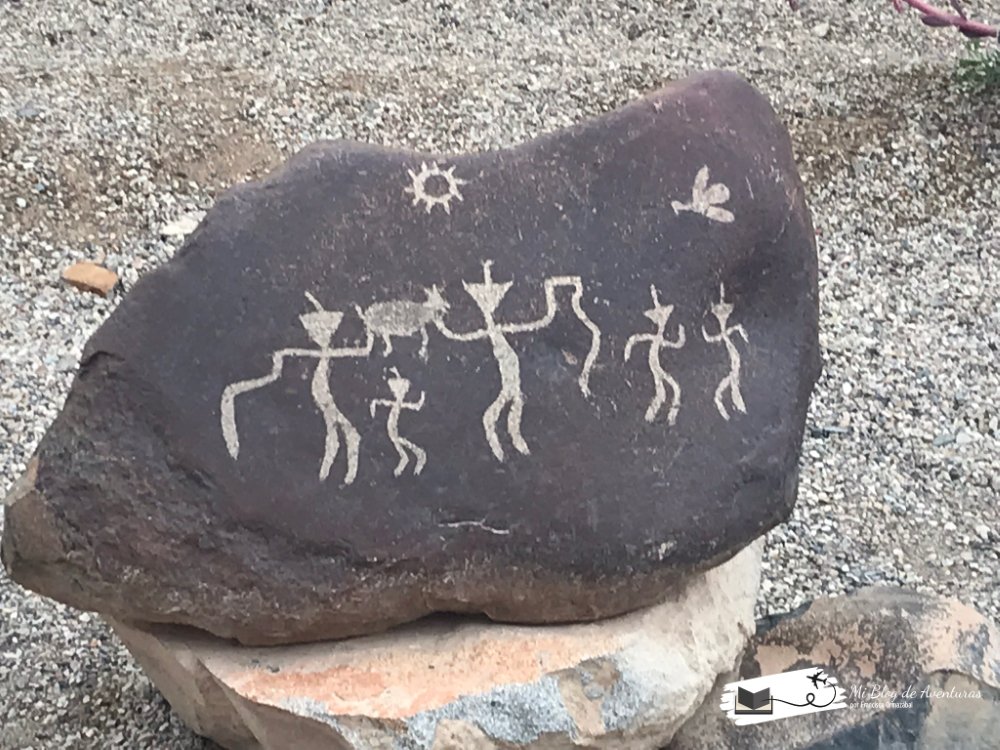Petroglyphs of Miculla | Tacna

Location
The Petroglyphs of Miculla | Tacna are located in the Palca valley in the Tacna region of southern Peru. Here are specific details about their location:
- Geographical Coordinates: Approximately 17°55′ S latitude and 70°09′ W longitude.
- Distance from Tacna: They are located about 22 kilometers northeast of the city of Tacna, which is approximately a 30 to 45 minute drive.
- Access: From Tacna, the site can be reached by following the road to the Palca valley. The road is signposted and accessible to vehicles.
How to get there?
- From Tacna: Leaving from the city of Tacna, take the road that goes northeast towards the valley of Palca. The route is direct and signs guide visitors to the archaeological site of Miculla.
- Point of Reference: The petroglyph complex is near the Miculla hanging bridge, an additional attraction that facilitates the identification of the site.
Directions
From Tacna:
- Leave Tacna on Av. Bolognesi towards the northeast.
- Continue on highway PE-38 for approximately 20 kilometers.
- Follow the signs to the Miculla petroglyph site
Transportation
- By car: The most common and convenient way to get there is by car or cab from Tacna.
- Organized Tours: Tourist tours can also be arranged in the city of Tacna that include transportation and guides for a more informative visit.
Cultural Importance
Description and Characteristics
- Dating: The petroglyphs are estimated to be between 1500 and 3000 years old, belonging to different pre-Inca cultural periods.
- Subject matter: The engravings represent a variety of figures, including humans, animals (such as llamas, felines and birds), hunting scenes, ritual dances and geometric figures.
- Technique: The petroglyphs were carved into the rocks using stone tools, leaving deep and lasting incisions.
- Distribution: The figures are distributed over a wide area, covering several hectares, indicating that it was a place of cultural and religious significance for ancient societies.
Cultural and Archaeological Importance - Cultural Heritage: Miculla’s petroglyphs are a testimony to the ingenuity and creativity of pre-Columbian cultures. They represent a form of rock art that has endured through the centuries and offer a valuable window into the past.
- Ongoing Research: The site continues to be the subject of archaeological research, with studies underway to unravel more details about the life and beliefs of the ancient inhabitants of the region.
- Archeology: Miculla’s petroglyphs provide valuable information about the pre-Columbian cultures that inhabited the region, their beliefs, customs and ways of life.
- Tourism: This site is an important tourist attraction, promoting interest in Peruvian history and culture, and contributing to local economic development.
History
- Cultural Interaction: The Miculla petroglyphs not only represent the local culture, but also reflect influences from other neighboring cultures. Trade routes and interactions between different ethnic groups in the Andean region would have facilitated the exchange of ideas and artistic techniques.
- Regional Development: The Tacna region has been an important crossroads in the history of South America, with connections to the Andean highlands, the Pacific coast and the Atacama Desert. This strategic location helped the development of complex cultures that left their mark at sites such as Miculla.
- The petroglyphs of Miculla are an archaeological treasure that gives us a glimpse into the life and spirituality of the ancient cultures that inhabited southern Peru. Their study and preservation continue to be crucial to better understand the pre-Columbian history of the region.
Cultural and Archaeological Importance
- Cultural Heritage: Miculla’s petroglyphs are a testament to the ingenuity and creativity of pre-Columbian cultures. They represent a form of rock art that has endured through the centuries and offer a valuable window into the past.
- Ongoing Research: The site continues to be the subject of archaeological research, with studies underway to unravel more details about the life and beliefs of the ancient inhabitants of the region.
- Figures and Scenes: The Miculla petroglyphs depict a variety of subjects, including human figures, animals (such as llamas, felines, and birds), hunting scenes, ritual dances, and geometric patterns. These images offer insight into the daily life, religious beliefs, and rituals of ancient cultures.
- Interpretation: Some researchers believe that the petroglyphs had a ritual or ceremonial purpose, possibly related to fertility, hunting, or cosmology. Theories have also been proposed suggesting that the engravings served as maps, calendars, or records of important events.
Origins and Chronology
- Dating: The Miculla petroglyphs date back to a period ranging from 1500 to 3000 years. This places them in pre-Inca times, although the exact time range is still the subject of study and debate among archaeologists.
- Culture: The engravings have been attributed to various pre-Columbian cultures that inhabited the region, including the Chiribaya and Tiwanaku, among others. These cultures had a great development in the Andean and coastal area of southern Peru and northern Chile.











